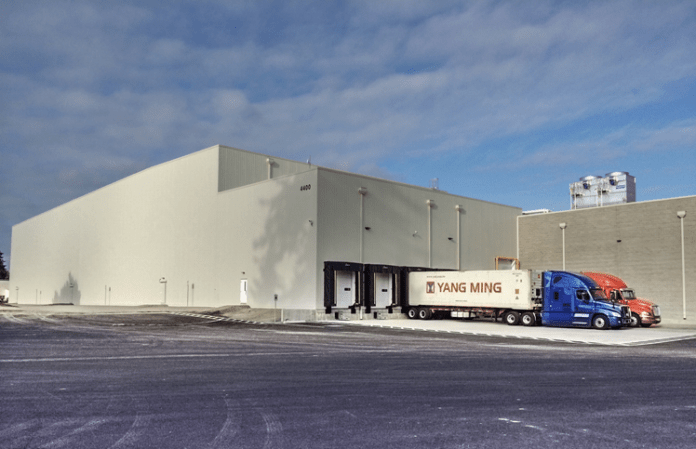Last year, Americans made a lot of smoothies. So much so that they spent $1 billion on frozen fruit, which has quickly become the #1 item in the frozen food sector. And sales are up almost 70 percent in the last five years, according to Nielsen data.
“Years ago, frozen wasn’t really that good,” said Stan Firestone, CEO of Vancouver-based Firestone Pacific Foods. The company flash freezes and distributes conventional and organic fruit produced throughout the Pacific Northwest. “Now, you’re actually getting something that’s better than fresh, and there’s health benefits.
The increasing demand for frozen fruit has directly affected Firestone Pacific Foods, a key player in domestic and international frozen fruit retail distribution.
“Our [domestic] and international business is rapidly expanding and we needed our own warehouse,” said Firestone. “Ten years ago, frozen fruit wasn’t on [U.S. retailers’] radar. Now we are concerned if we will have enough frozen fruit to meet the demand as we grow out the retail sector.”
Designed to hold 21,000 pallets of frozen fruit
In June, Firestone Pacific Foods completed the first phase of an $8 million temperature-controlled warehouse located at 4400 NW Fruit Valley Rd. The 15-acre plot was purchased from Firestone Properties, which had owned the property for many years. To run the warehouse, the company hired about 15 employees, including management personnel and forklift operators.
With guidance from the city of Vancouver, Clark Public Utilities and the Columbia River Economic Development Council (CREDC), the frozen foods company built Phase 1 to store 2 million cubic square feet, or up to 21,000 pallets, of frozen fruit. If and when all phases are complete, the warehouse will have 10 million cubic square feet of cold storage space, five times its current size.
Vancouver-based architect Sterling Design planned the warehouse to store as much product as possible.
“Normally, most warehouses are 25 feet high, but we went 50 feet high to get optimal storage,” said Firestone.
To stack and retrieve these pallet loads, the company purchased two narrow-aisle reach forklifts that can reach 50 feet high and operate in freezing conditions.
The warehouse, located across the street from the company’s 50,000-square-foot processing plant, stores frozen fruit ready for Western U.S. and international distribution. Previously, Firestone Pacific Foods stored this fruit off-site at a cold storage facility in Portland.
“We’ve taken a thousand trucks off the road,” Firestone said.
California and Canada producers ship fresh fruit to Firestone Pacific Foods’ processing plant where it is flash frozen. Depending on the destination of the frozen fruit, the fruit is either sent to Firestone Pacific Foods’ warehouse or to one of eight additional warehouses across the U.S.
1.1 million kilowatt-hours of energy savings
Firestone Pacific Foods expects to save 1.1 million kwh of energy in the first year of operation – all from energy-savings equipment connected to a master control system.
The savings equates to removing 94 houses from the grid, said Tim McMenamin, owner of Envision Controls Engineering.
For the past three years, Firestone Pacific Foods has participated in a shared energy project developed by the CREDC and Clark Public Utilities to reduce utility costs of seven industrial food processors in Southwest Washington. The program stemmed from Clark County’s focus on growing the region’s food processing industry.
“Everything is controlled and nothing is running if it doesn’t need to be,” said Firestone.
For example, the warehouse temperature must remain at -5 degrees. Sensors detect the temperature in multiple locations throughout the warehouse. If the temperature rises above -5 degrees, industrial fans automatically blow cold air.
“[Without this technology], equipment to get freezer space cold enough would sometimes work a lot harder than it would need to,” said McMenamin. “But with automation, you can use a lot less energy depending on the conditions, whether the freezer space is full or empty.”
Before completing the new warehouse in June, Firestone Pacific Foods had already saved more than 1 million kwh of energy from upgrades, including those installed during the company’s 2014 food processing expansion project, which added 20,000 square feet to the facility.
Plans for expansion
Firestone Pacific Foods expects to add more phases to the Fruit Valley warehouse over the next few years to possibly reach 10 million cubic square feet, said Firestone. Other U.S. frozen food manufactures may lease space in future phases of the warehouse.
“The warehouse sector is growing and there is demand for [freezer storage],” he said.
The food processing industry, in which Firestone Pacific Foods is a key player, is the third largest manufacturing sector in the Pacific Northwest. The sector employees more than 280,000 people and it has a regional impact of $42.5 billion in annual revenues, according to the CREDC.
“There are companies around here and companies on the east side of the U.S. that want products stored [in the Pacific Northwest] and do their international distribution from here,” said Firestone. “This would be a great place for their expansion.”




